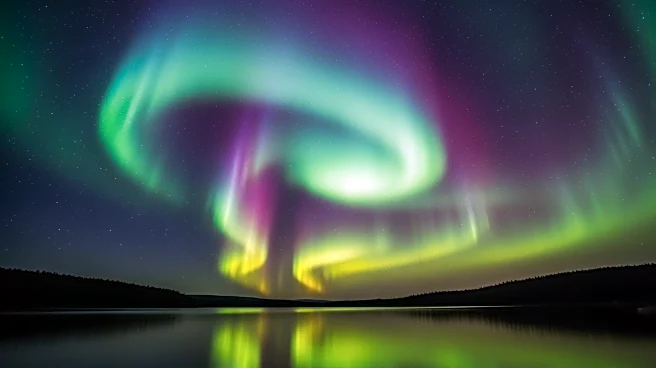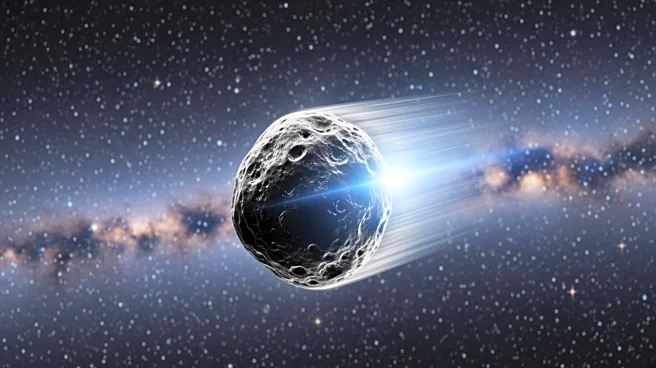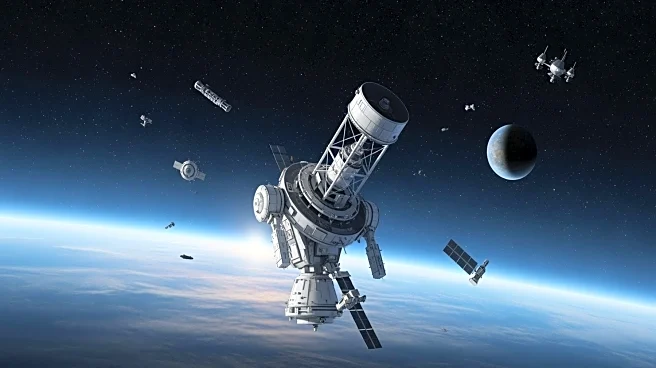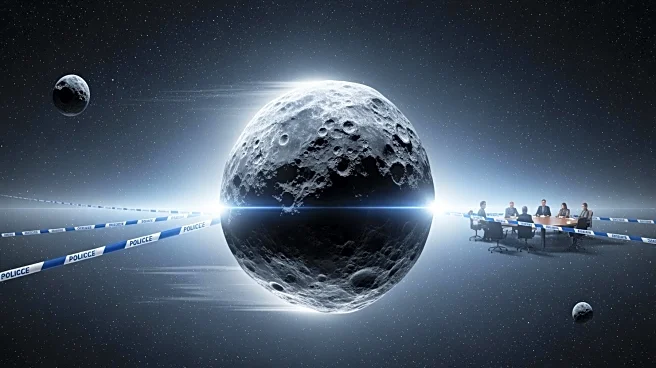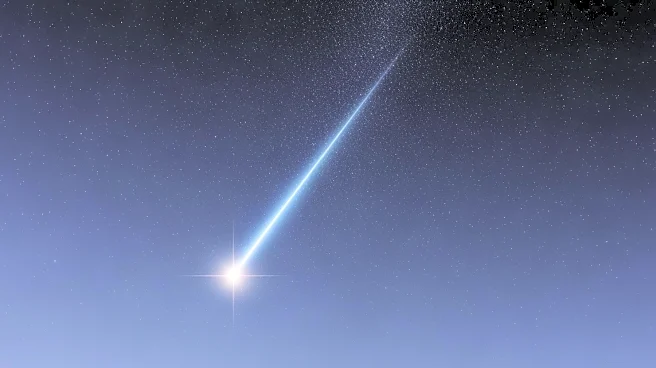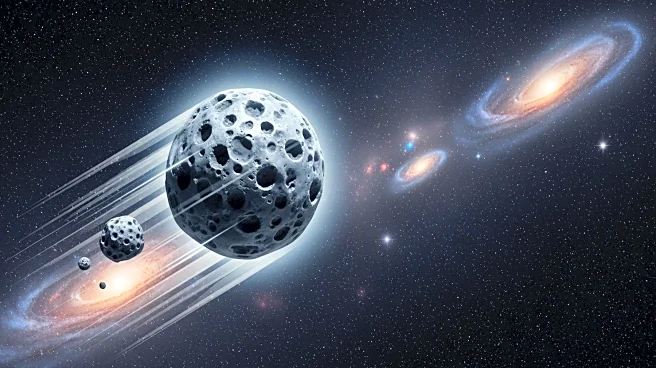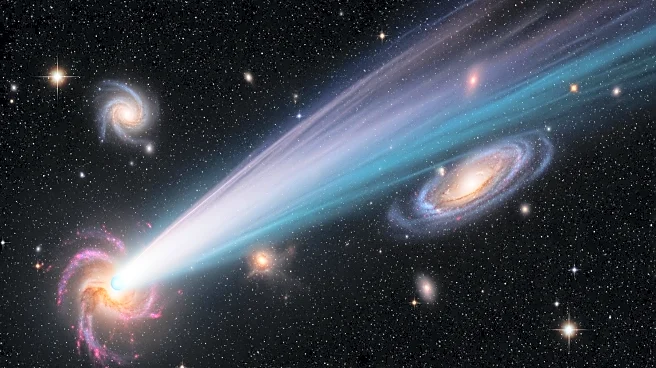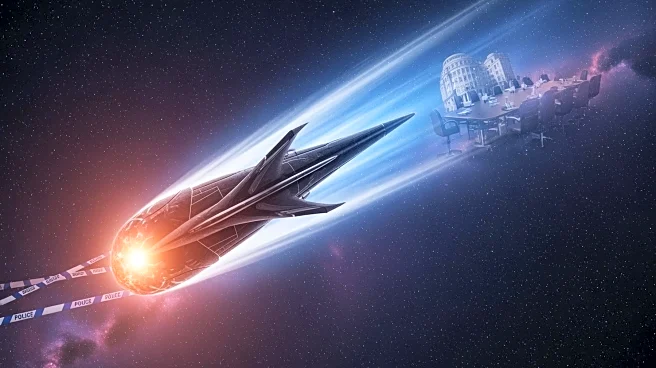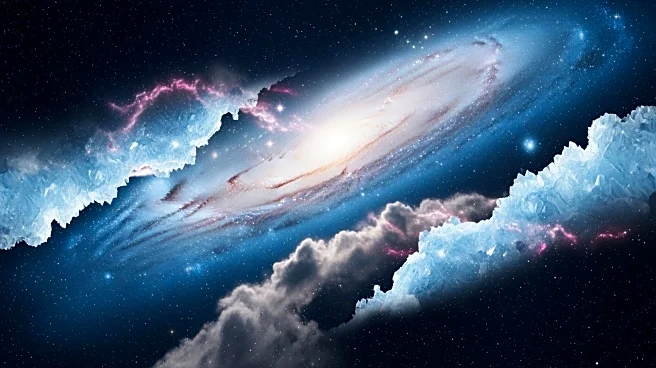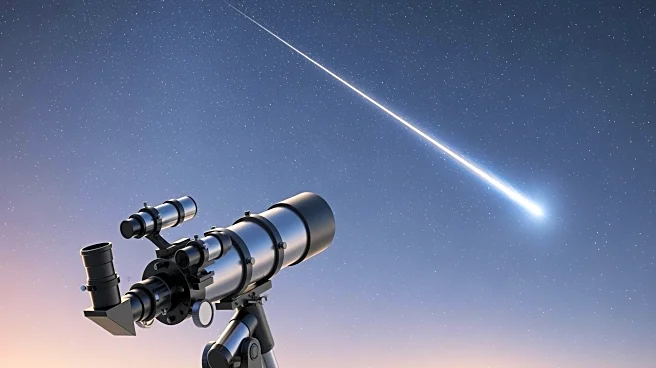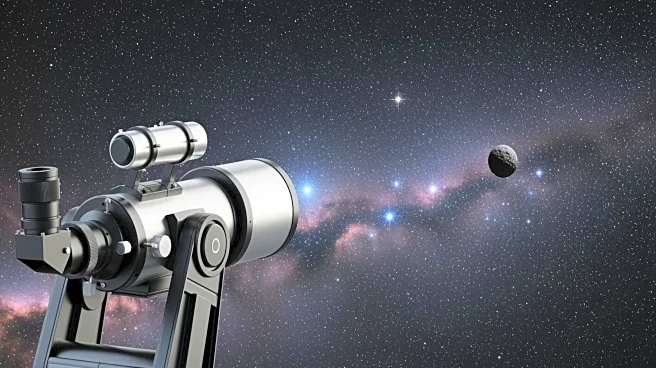What's Happening?
NASA has confirmed that the sun is reaching its maximum phase in its 11-year solar cycle, which is expected to last until March 2026. This phase, known as solar maximum, is characterized by an increase
in sunspots and solar activity. Jamie Favors, director of the Space Weather Program at NASA Headquarters, explained that this increase provides an opportunity to learn more about the sun while also causing real effects on Earth and throughout the solar system. The heightened solar activity is expected to make the aurora borealis, or Northern Lights, more impressive this winter, offering a rare viewing opportunity for enthusiasts.
Why It's Important?
The solar maximum has significant implications for space weather, which can affect satellites, navigation systems like radio and GPS, and power grids on Earth. The increased visibility of the Northern Lights presents a unique opportunity for noctourism, attracting tourists to regions where the auroras are visible. This could boost local economies in areas known for aurora sightings, such as parts of Alaska and northern states. Additionally, the solar maximum provides scientists with valuable data to study solar activity and its impacts on space weather, contributing to advancements in space science and technology.
What's Next?
As the solar maximum continues, scientists and researchers will monitor its effects on space weather and Earth. The increased solar activity may lead to more frequent and intense auroras, providing further opportunities for observation and study. Tourists and locals in regions where the Northern Lights are visible can expect more vibrant displays, potentially leading to increased travel and tourism activities. NASA and other space agencies will continue to study the sun's behavior during this period, aiming to better understand solar cycles and their impacts.
Beyond the Headlines
The solar maximum not only affects the visibility of the Northern Lights but also poses challenges for technology reliant on satellite communications and navigation systems. Understanding and predicting space weather events can help mitigate potential disruptions to these systems. Furthermore, the increased interest in noctourism highlights the growing trend of travel experiences centered around natural phenomena, reflecting a broader cultural appreciation for nature and science.
